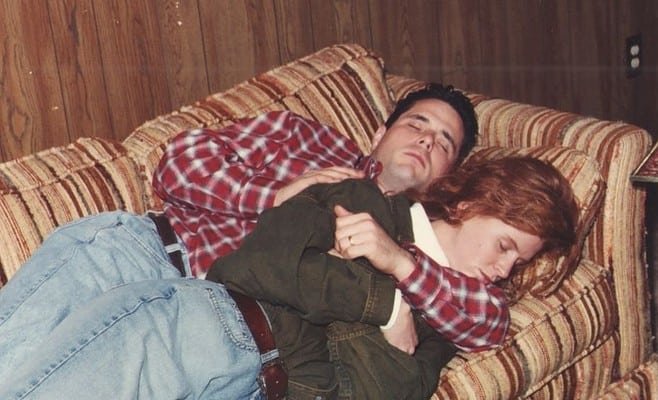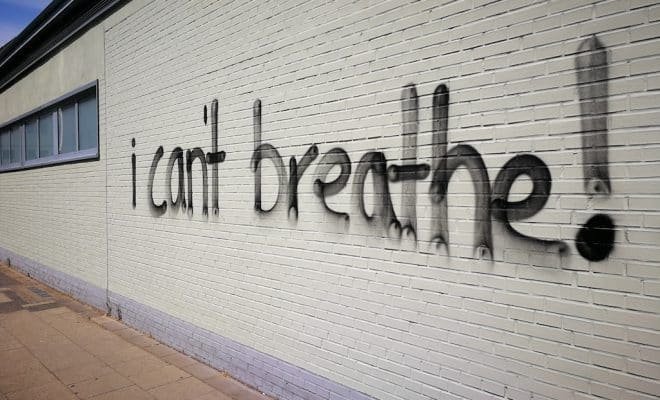The Right to Death with Dignity

Physician-assisted suicide is only legal in a handful of states, and most of society seems to be firmly opposed to allowing an individual the right to make decisions concerning when and how their life should end. Regardless of the symptoms that the ill person is having, how much they are suffering, or how deteriorated their quality of life is, society tends to disregard one’s feelings about the dying process. Compassion and empathy are qualities that society could stand to embrace a little more tightly. Allowing someone who is suffering from a terminal illness the option to end their life on their own terms, and with a sense of dignity, is the ultimate act of compassion.
Upon hearing the term physician-assisted suicide (PAS), the first image that comes to most people’s mind is that of Dr. Jack Kevorkian, posing with his homemade “death machine,” a gleeful smile plastered across his face. While most view Dr. Kevorkian as a monster who relied on his license to practice medicine as a ruse that allowed him to commit murder, the truth is that he was a brilliant man. Kevorkian was a retired pathologist who ultimately paved the way for the right to die movement. From 1990 until 1998, Dr. Kevorkian assisted in well over 100 suicides for patients with terminal illnesses or a severely diminished quality of life. According to an article from PBS, after nearly a decade of legal battles regarding Kevorkian’s role in PAS, he was convicted in 1999 of second-degree murder and delivery of a controlled substance.
After serving eight years of a 10-25-year sentence Dr. Kevorkian was released on parole in June of 2007. One stipulation of his release was that he would not perform anymore physician-assisted suicides; nor would he discuss PAS, or advocate for a patient’s right to die. Before he was imprisoned, Kevorkian stunned the world when he appeared on a popular news program and provided a video that showed him performing an assisted suicide. This video was enough to cause a panic and send society into an uproar. Kevorkian’s actions performed on the behalf of those who were terminally ill caused him to be hailed as a murderer, and labeled a deviant member of society. Whether you agree with his stance on physician-assisted suicide or not, you cannot help but be impressed with the time, energy, and self-sacrifice he put into advocating for those who wanted nothing more than the opportunity to die with their dignity still intact.
The medical definition of physician-assisted suicide as defined by Merriam-Webster is “suicide by a patient facilitated by means or information provided by a physician who is aware of how the patient intends to use such means or information.” The stigma surrounding suicide, along with the cut and dry tone of Merriam-Webster’s definition leaves physician assisted suicide sounding ominous and taboo. Today, suicide is seen as deviant behavior, even without a physician to assist in the process. It is important to note that another difference between euthanasia and PAS is that in euthanasia, another person does the killing, but with PAS the patient commits the act that will end his or her life. While there are many similarities between euthanasia and PAS, there are also many differences.
Although PAS has existed since the creation of medicine, it is still an extremely controversial topic. In 1997 the U.S. Supreme Court ruled that there would be no constitutional right to physician-assisted suicide, although state legislatures may choose to legalize PAS. With this ruling, physicians who provide euthanasia outside of the states in which PAS has been legalized are able to be charged with a felony similar to manslaughter. The Hippocratic Oath that all physicians take specifically forbids the administration of poison or other toxic substances that will end a patient’s life, and it is because of this oath that PAS is considered to be deviant in addition to the taboo attached to non-assisted suicides.
The legalization of Death with Dignity or Right to Die would bring about extreme changes to the ethics of medicine. It is important to note that even with the U.S. Supreme Court opposing physician-assisted suicide they acknowledge that it is the right of all American citizens to receive palliative care. Palliative care is an approach that provides relief from symptoms and pain associated with severe or terminal illness. The ultimate goal of palliative care is to provide an improved quality of remaining life for the patient and their family. Even with palliative care, many patients with terminal illness would still wish to have the right to die. Most individuals who are suffering from a terminal illness worry more about their families watching them deteriorate, no longer being able to communicate, feed themselves, or use the toilet than they do about the amount of pain they are in. Given the choice, most would rather be able to die on their own terms, while they are still themselves, and able to say goodbye to their loved ones.
Unlike other forms of suicide, physician-assisted suicide can be a very slow process. An ailing patient is not able to make the decision and end their life the same day when relying on PAS. To be approved for physician-assisted suicide, a patient must be at least eighteen years of age, reside in either Oregon or Washington, be of sound mind and capable of making decisions, have a terminal illness that will result in death within six months, and have two physicians who agree that the patient meets the criteria. Often times the patients are also required to undergo counseling and a psychological assessment with a licensed psychologist before they are approved for PAS.
Upon being approved, the patient may submit an oral request to their physician for the drugs that will ultimately end their life. Once that request is made, the patient must wait fifteen days, and then make a second oral request, which is then followed by a written request to the physician. When the patient submits the written request for the medication, there is a second waiting period of 48 hours before they will be allowed to pick up the prescribed euthanasia medications. After retrieving the prescribed medications, the patients are then free to choose when and where they will consume the drugs that will ultimately end their life. Most patients choose to do this while surrounded by friends and family, using the opportunity as a way to provide closure, and to make peace with their impending death. Once the medication is ingested, the process is rather fast. An equivalent of the process of dying via medications obtained for a PAS would be the lethal injection of an inmate. It is perfectly legal to inject a prisoner with drugs that will end their life and is even considered a merciful and humane death.
After comparing traditional suicide with physician-assisted suicide, it is easy to see the differences between the two. While traditional suicides may always be viewed as deviant behavior, there is hope that PAS may one day be seen for what it is: an act of kindness and compassion extended toward our loved ones who are tired of suffering. Perhaps one day PAS will be legalized for the whole country, and the stigma that society sees when they think of physician-assisted suicide can be removed. Physician-assisted suicide is seen as deviance from societal norms because it involves one person ending the life of another. Even though it is not murder, society has been conditioned to view PAS as abnormal, depraved, cruel, and evil. In spite of the counseling, waiting periods, and other hoops that must be jumped through, families and friends of those who choose PAS are often accused of not knowing what they want, or are being coerced into the decision by a physician who is hungry for money or has a secret murderous side. It is our duty to provide PAS services for our loved ones who are terminally ill or have a diminished quality of life, and this is a choice we should allow them to make for themselves without making them feel deviant or guilty.
Most individuals who oppose PAS do so because of moral, ethical, or religious reasons. In connection with religion, suicide is seen as a sin, or as going against “God’s plan.” Suicide is viewed by society as cowardly and taking the easy way out. What we fail to notice is that it is far from easy to make the conscious decision to stop living. These people have families. They have lives. They have dreams and wishes. They also have unimaginable pain, both physical and emotional. Yes, they may be making the choice to stop living, and it may feel like they are choosing to leave you behind but really, they are just tired. They want to rest. They want you to remember them for who they were before an illness caused them to deteriorate before your eyes. They don’t want to be a burden or a nuisance.
Being completely stripped of your independence and left vulnerable can be a humiliating experience. Who are we to sentence someone who is dying anyway to a “life” of being dependent on someone for even the simplest of tasks?










